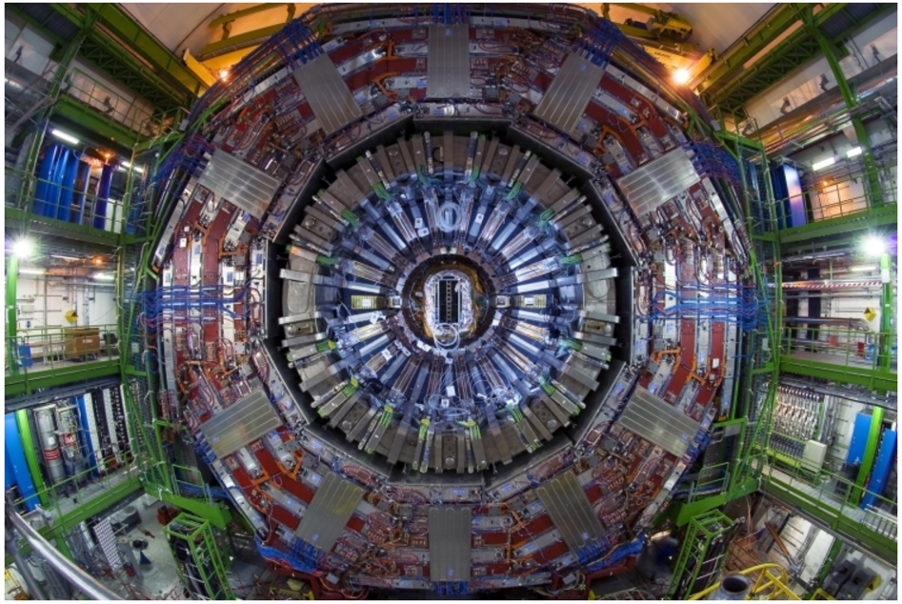
By studying events with only a single energetic photon, the CMS experiment places some of the most stringent constraints to date on dark matter models and theories predicting extra dimensions of space.
One way to explore physics beyond the standard model is by studying collisions where a single energetic photon (𝛾) is detected while the rest of the event’s energy appears to be missing! These monophoton events could be a signature that indicates fascinating phenomena, such as dark matter particles escaping detection, or the existence of extra dimensions, as predicted by models like the Arkani-Hamed, Dimopoulos, Dvali (ADD) model – named after the scientists who proposed the idea.
In the ADD framework, the usual “Planck scale” of gravity in four dimensions, which is around 1019 GeV and represents the energy at which the effects of quantum gravity become significant, is an effective quantity, while the true fundamental Planck scale in the higher-dimensional space could be at much lower energies, and possibly within reach of collider experiments. In the simplified dark matter model, dark matter interacts with standard model particles through a mediator particle Z'. In collision events, the momentum carried away by these “invisible” particles, called missing transverse momentum, provides a crucial clue in the search for dark matter. Missing transverse momentum arises when a particle escapes the detector undetected. Analyzing these energy imbalances could thus reveal the presence of dark matter, or other physics beyond the standard model.

Above: Schematic (Feynman) diagrams showing the production of dark matter particles in the simplified dark matter model (left), and the production of the hypothesized particle carrying gravity – graviton – in the ADD model (right).
In this analysis, we use data collected by the CMS detector at CERN to search for monophoton events that could reveal hints of new physics. Our study focuses on events featuring a high-energy photon accompanied by significant missing transverse momentum, while carefully suppressing major backgrounds from the known standard model processes. The major backgrounds include the production of a photon along with a Z boson decaying to neutrinos or a W boson decaying to a charged lepton and a neutrino, and are estimated from samples of events where a lepton (electron or muon) passes our selections. This information is then used to predict the background in events where leptons do not pass the selections.
We perform a statistical analysis to quantify the significance of a possible signal. We find no significant excess of monophoton events above the predictions from standard model calculations. We use the agreement of the data with the expectation to place some of the most stringent limits to date on dark matter models and extra dimension theories.
For the dark matter searches, we set new exclusion limits on the mass and coupling of mediator particles that govern interactions between dark matter and standard model particles. For the extra dimension model, we constrain the fundamental Planck scale, extending the constraints from experiments at previous colliders.
This study was led by early-career researchers, including Shriniketan Acharya, a graduate student under the leadership of Dr. Bhawna Gomber at the University of Hyderabad, who played key roles in the analysis.
The results of this search provide valuable guidance for future collider searches, helping refine theoretical models and improve experimental sensitivity to potential new physics signatures.
Written by: Shriniketan Acharya, for the CMS Collaboration
Edited by: Muhammad Ansar Iqbal
Read more about these results:
-
CMS Physics Analysis Summary (SUS-23-016): "Search for new physics in the final state of a single photon and large missing transverse energy in proton-proton collisions at 13 TeV"
-
Display of collision events: CERN CDS
-
@CMSExperiment on social media: Bluesky - Facebook - Instagram - LinkedIn - TikTok - Twitter/X - YouTube

